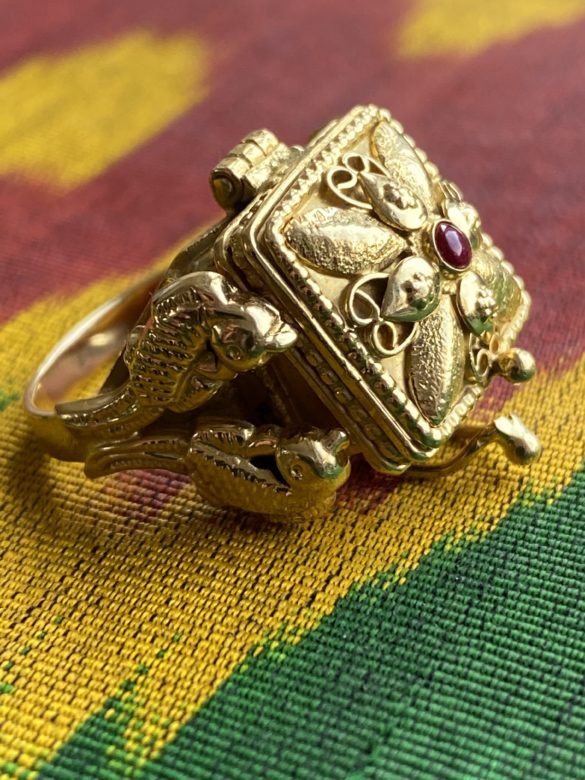
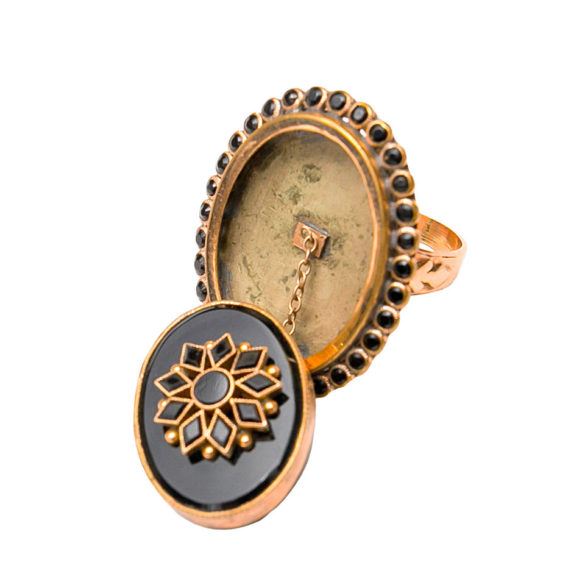
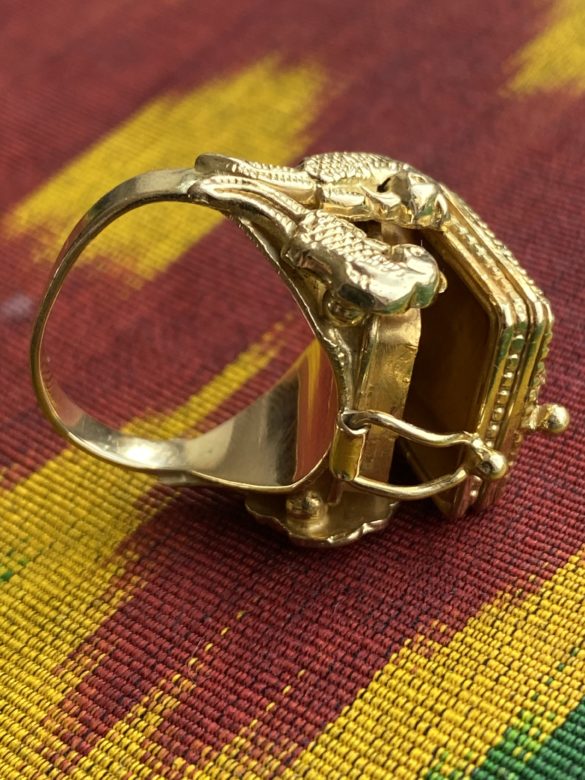
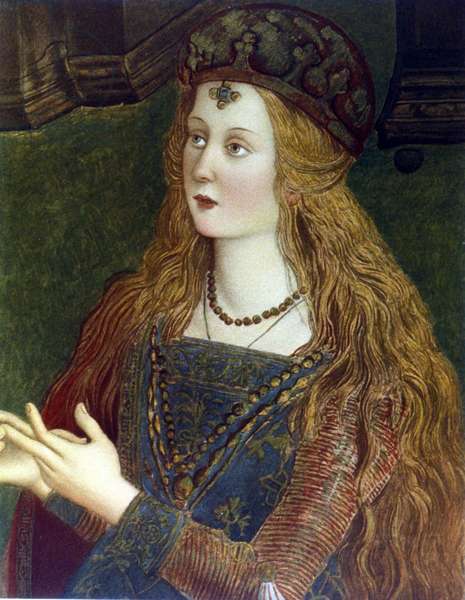
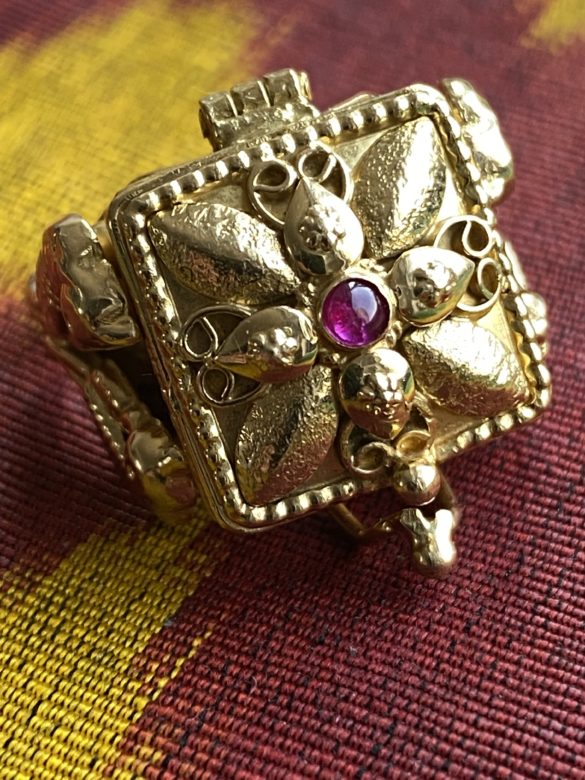

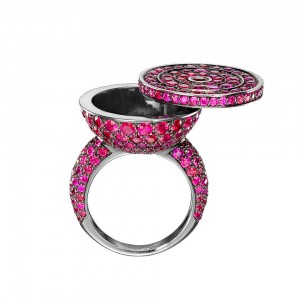
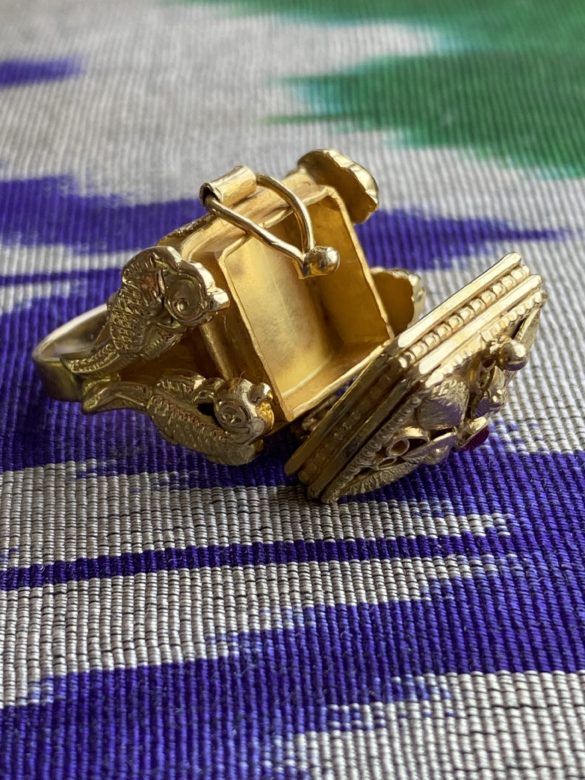
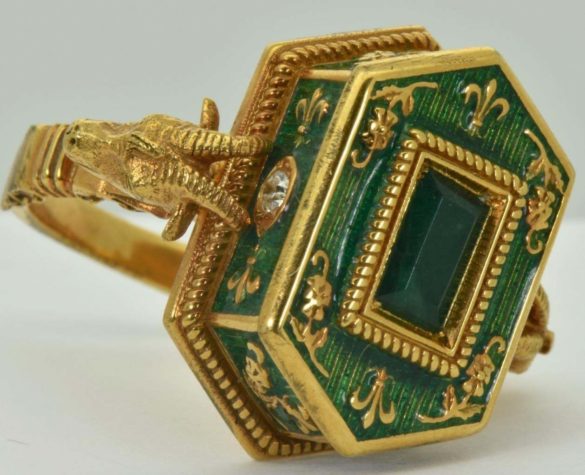
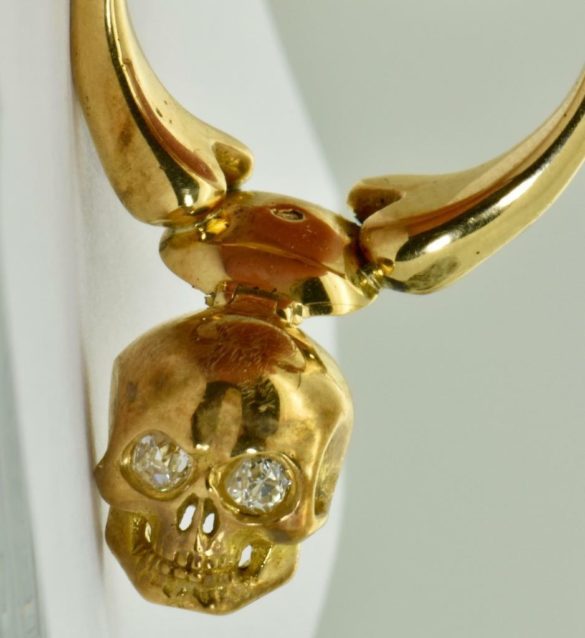
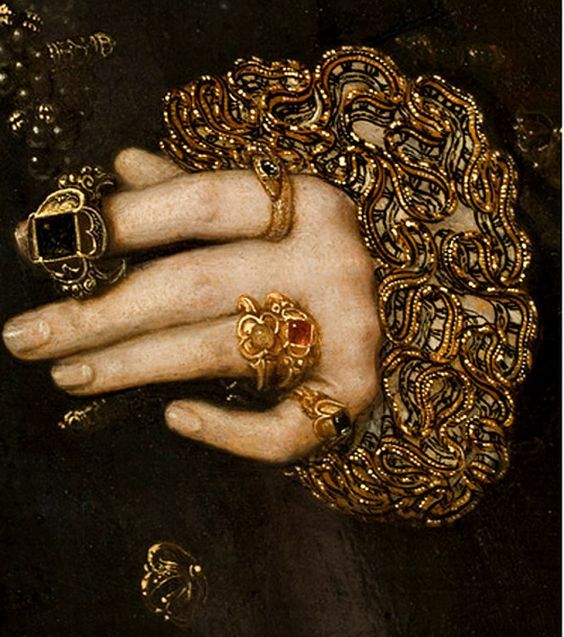
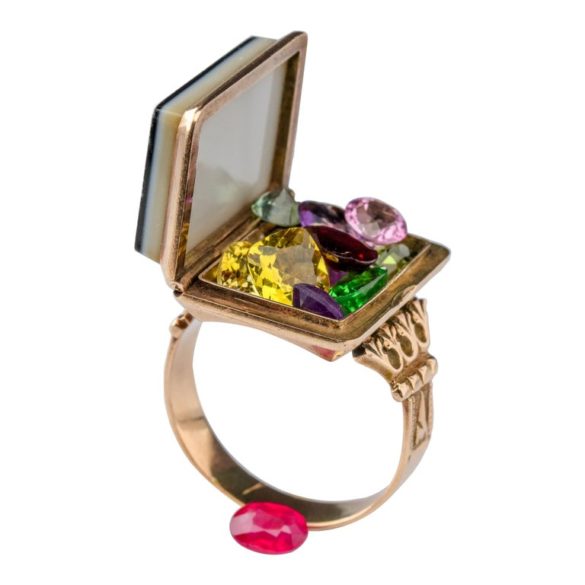
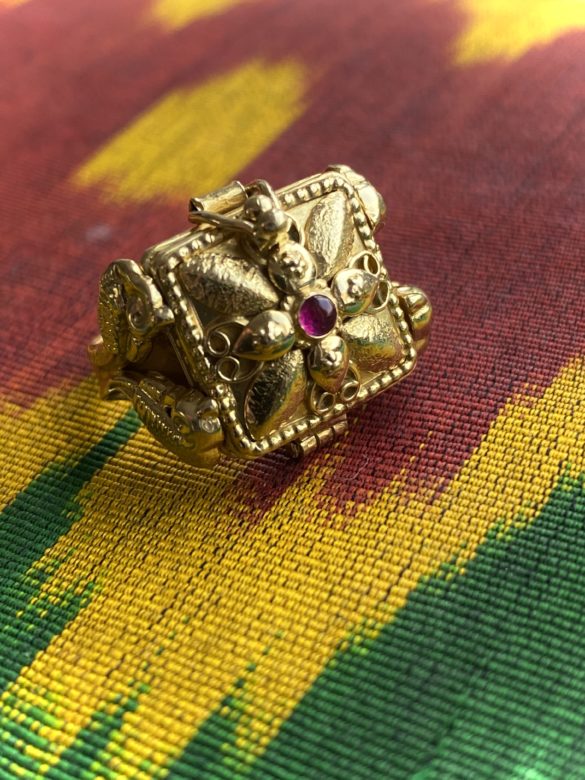
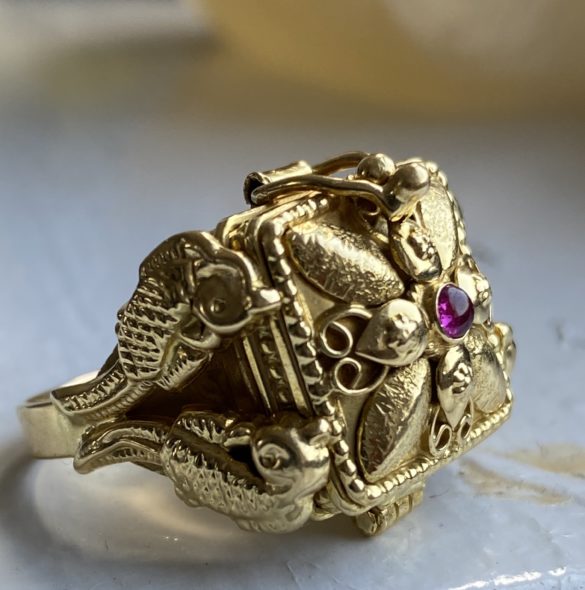
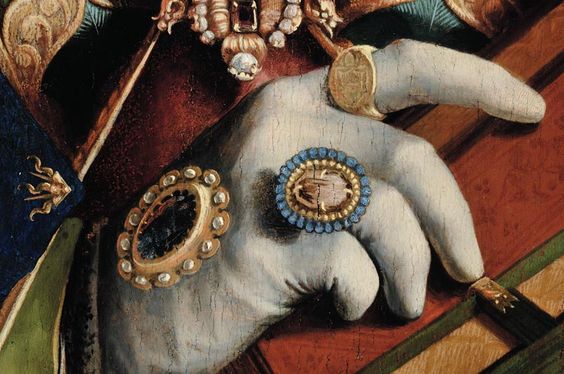

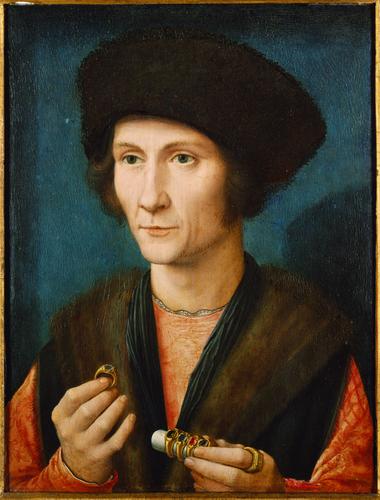
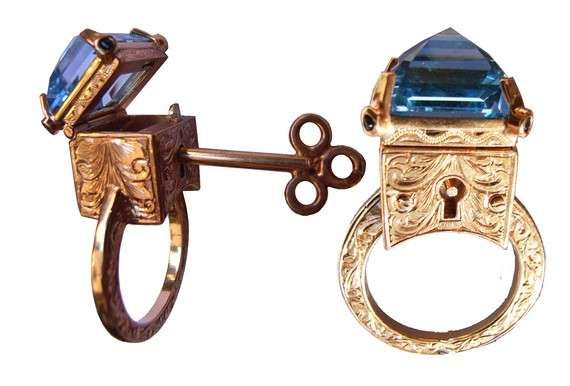


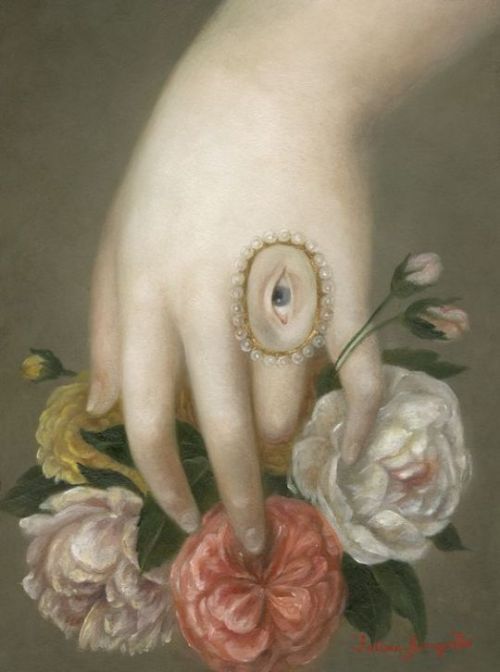

There are lots of names for poison rings – secret, pillbox, compartment, locket or vessel rings – but historically they all serve the same sinister purpose: to slip poison into an enemy’s food or drink, or to help the wearer commit suicide to avoid capture or torture. Pretty macabre! Fortunately, today they are delightful items of jewelry. Their secret compartment can be used for something magical, like holding an image of someone we love for hope and healing.
In the Middle Ages, these rings were used to hide relics of saints, such as tiny bits of their hair, bone and teeth, to protect the wearer from misfortune. During the Renaissance, aristocrats used them to hold mementos including locks of hair and portraits of loved ones, or filled them with perfume to override the rank odors of the street.
Designed with a small container hidden under a hinged cover, poison rings are thought to have originated in ancient India and the Far East, replacing the practice of wearing keepsakes in pouches around the neck. After their popularity spread to other parts of Asia, the Middle East and the Mediterranean because they were so practical, they arrived in Western European during the Middle Ages.
Both fact and fiction surround the use of poison rings. Hannibal is said to have worn one and may have used it in 183 B.C. to do himself in. In the early 1600’s, Lucrezia Borgia, an Italian noblewoman who was the daughter of Pope Alexander VI, may have used one to dispose of her political rivals. When Elizabeth I of England died in 1603, a locket ring with a secret compartment containing portraits of her mother, Anne Boylen and herself, was taken from her finger.
The rings are designed with all kinds of different ornamentation. The larger the stone, the more could be concealed in the compartment below, so the dispersal of poison could go undetected. But the role of fact or fiction aside, the poison ring has such a bewitching history that today it offers a sense of mystery and has a hold on our imagination. It can be interpreted as a symbol of hope and healing, turning it from object death into a source of pleasure and joy.
You’ve got less than two weeks to for a chance to win your own unique 18 carats gold and ruby ” Silk Spice Ring” signed Bochic by getting involved in the Silk Spice company launch on Kickstarter . Click on this link to learn more.
Sources:
en.wikipedia.org/wiki/Ring_(jewellery)
?www.medieval-rings.com/about-rings/gothic
ebooks.adelaide.edu.au/d/dumas/alexandre_pere/celebrated/chapter1.html
?? en.wikipedia.org/wiki/Wedding_ring
www.langantiques.com/university/Rings:_Ancient_to_Neoclassical
www.metmuseum.org/art/collection/search/388342
